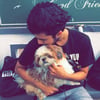Welcome back to our Front-End Projects Tutorial series! In Part 1, we drilled deep into HTML and how to structure a simple webpage. With that groundwork laid, let’s continue to move forward with the essential tool for all web developers – CSS. 🎨
Projects Full Tutorial: " Front-End Projects Tutorial: Create a Simple Yet Eye-Catching Web Page! (Part 2) "
You’ll see which CSS styles were applied to transform that basic structure into an appealing web page in this tutorial.
Let’s zoom in a bit more on how CSS transforms a blank HTML document into a visually interesting site by applying styles to elements such as the header, navigation bar, hero section, and many other features. Are you ready to add some life to your webpage? Let’s get started!
Projects Final Look:
Video Tutorial:
Why CSS is Important for Web Design
So, why is CSS such a big deal? 🤔 In simple terms, HTML is the skeleton of your webpage, but CSS is the skin, clothing, and makeup that makes it look presentable. CSS (Cascading Style Sheets) lets us control the layout, colors, typography, and even the interaction effects of our web page.
Everything would look bare-bones and boring if it were not for CSS. By using CSS, we can provide a beautiful user experience and ensure consistency across different devices.
Concepts We will Learn:
- Universal Reset: Removing default margins and padding from all elements.
- Body Styling: Setting font, background color, and text color for the entire page.
- Header Styling: Customizing background, text color, and header alignment.
- Navigation Bar: Using Flexbox to align menu items horizontally.
- Hover Effects: Changing link appearance when hovered over.
- Hero Section: Adding a background image and centering text with Flexbox.
- Text Shadow: Adding shadow to text for a stylish effect.
- Main Content Styling: Setting max-width, centering content, and adding box shadows.
- Features Section: Using Flexbox to align feature boxes side by side.
- Call-to-Action Button: Styling buttons with padding, background color, and rounded corners.
- Button Hover Effect: Changing button color when hovered over.
- Footer Styling: Matching footer design with header using similar colors and alignment.
- Social Media Links: Styling social links in the footer with consistent spacing and color.
- Responsive Design: Using media queries to adjust the layout on smaller screens. -Flexbox Layout: Simplifying alignment and distribution of elements across the page.








Top comments (0)